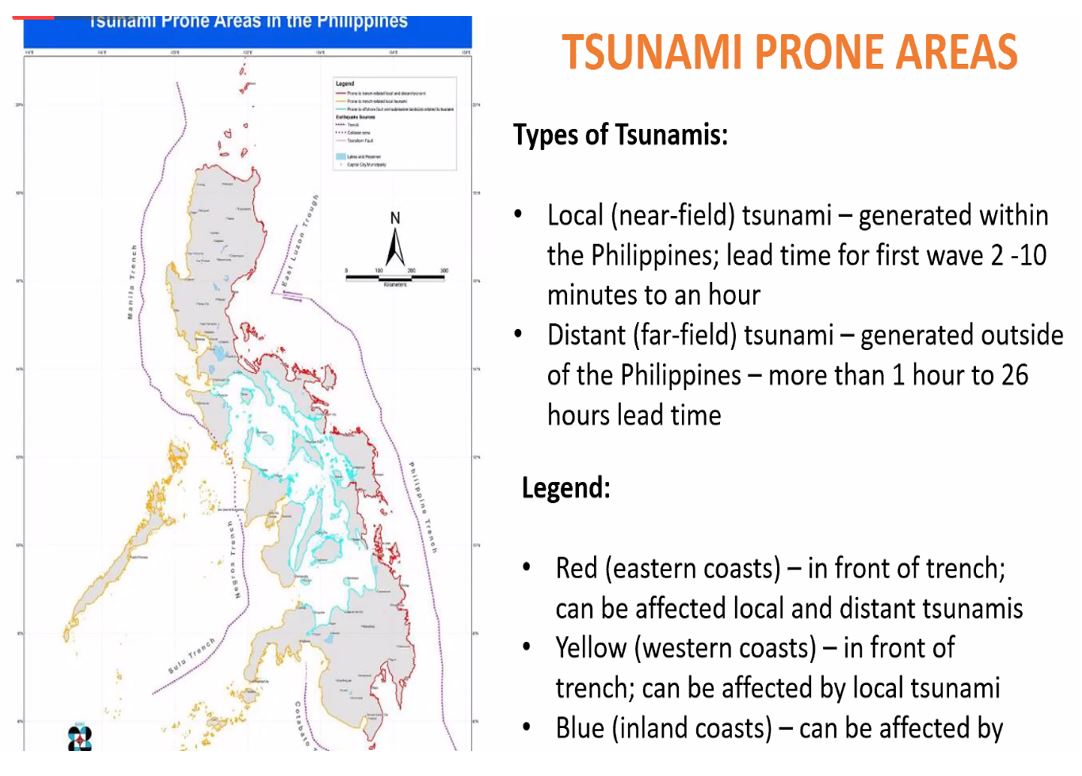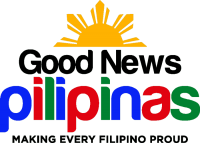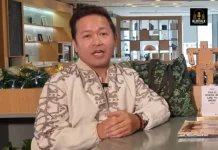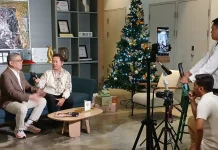
The Philippines’ tsunami readiness under the new normal conditions is being pushed by the Department of Science and Technology – Philippine Institute of Volcanology and Seismology (DOST-PHIVOLCS) campaign.
The awareness campaign dubbed “Tsunami Awareness, Community Preparedness, and Proper Response in the New Normal” was launched in observance of the World Tsunami Awareness Day (WTAD) on November 5, 2020.
During the webinar InfoSentro sa PHIVOLCS, DOST Undersecretary and PHIVOLCS Officer-in-Charge Renato U. Solidum Jr. said that earthquakes in the Philippines are so numerous that also, in some instances, are accompanied by tsunami.
DOST-PHIVOLCS records show that more than 5000 earthquakes occur per year. Usec. Solidum reported that many people are already familiar with the effects of earthquakes such as rupture, faulting, ground shaking, liquefaction, landslides, and fire. However, he pointed out that the people, particularly those residing in coastal areas, need to know more of the appropriate preparedness protocols to remain safe when tsunami strikes.
“However, not many areas in the Philippines have been recently affected by the tsunami. But if we recall, in the past earthquake events way back in 1976, earthquake events triggered tsunamis in some areas in the southern Philippines that arrived in 2 to 5 minutes after the earthquake. Tsunamis arrive fast in the country and we need to prepare for this,” Solidum said.
Usec. Solidum revealed that the Philippines is also vulnerable to tsunami due to the presence of offshore faults and trenches. Based on studies, about 10-14 million people are living near the shores that may be affected if a tsunami happens.
“This is important that people should be aware of the hazards of tsunamis and areas prone to tsunami. The lives of the people are at stake when tsunamis hit our country because of its devastating impacts.”, Solidum emphasized.
To address this concern, DOST-PHIVOLCS is leading the Tsunami Risk Reduction Program which consists of understanding and managing tsunamic hazards and risk, tsunami detection, warning and information dissemination, and enhancing tsunami preparation for effective community response.
On understanding tsunami hazards and risk, he reported that DOST-PHIVOLCS has already identified areas in the Philippines prone to local and distant tsunamis.
In Usec. Solidum’s presentation, he showed that local tsunamis will have a lead time of two to 10 minutes to arrive at the shore and one to 26 hours for distant tsunamis. “This would not be enough if the communities do not know what to do and what to prepare. This is why preparedness is important,” he revealed.
Because of this, DOST-PHIVOLCS developed tsunamic hazard maps, such as indicative maps showing various areas prone to tsunami for provinces and cities, and the different barangays in Metro Manila.
Tsunami modeling has also been done by PHIVOLCS that estimates tsunami height and arrival time. Other interventions are offshore mapping for active faults and mapping of the uplifted coastal terrace in the Philippines that will evaluate the potential of large earthquakes and tsunami generations.
Dr. Solidum also reiterated the existence of the REDAS software application developed by DOST PHIVOLCS which contains an earthquake hazard assessment module, earthquake, and tsunami impact assessment module, flood loss assessment tool, exposure data module, and severe wind impact modeling module which can be used by local government units and communities in preparation for different hazards.
REDAS stands for Rapid Earthquake Damage Assessment System that was developed way back in 2002.
Aside from REDAS, DOST-PHIVOLCS now has the GEORISKPH program composed of different platforms that serve as a digital gateway to enable stakeholders to access PHIVOLCS information and services easily. One of the program components is the GeoMapperPH for the development of the national exposure database for pre-and post-disaster. Another is the GeoAnalyticsPH for visualization and analytics for the development of various plans. These applications can be used by government agencies and local government units. On the other hand, for individuals and institutions, the HazardHunterPH app is available as a one-stop-shop hazard assessment service.
As part of WTAD, aside from the digital poster making and a slogan-making contest for students, DOST-PHIVOLCS also conducted a two-part webinar dubbed as PHIVOLCS InfoBit with topics “Baybayin ng Pinas, sa Tsunami ‘di Ligtas” and “Tsunami-Ready Ka Na Ba?”. The webinars aimed to enable the public to prepare, respond, and protect themselves in the event of an earthquake and tsunami, especially amidst the COVID-19 pandemic.
In 2016, the United Nations declared November 5 as the World Tsunami Awareness Day in honor of a true story from Japan: “Inamura-no-hi”, which means the “burning of the rice sheaves”. During an 1854 earthquake, a farmer saw the tide receding, a sign of a looming tsunami and he set fire to his harvested rice to warn villagers, who fled to higher ground.
Incidentally, the different disaster preparedness technologies developed by DOST-PHIVOLCS will be exhibited in the virtual celebration of the 2020 National Science and Technology Week that will run from 23-29 November.
This year’s theme is “Agham at Teknolohiya: Sandigan ng Kalusugan, Kaayusan, Kabuhayan, at Kinabukasan” that will feature a series of webinars, career talks, film showing, technology launching, and above all, the virtual exhibition of all DOST technologies.
For more information on the 2020 NSTW, please visit www.nstw.dost.gov.ph
CHECK OUT this Safety Guide When Typhoons Strike and this Guide for When Strong Earthquakes Strike During the Pandemic.
SEND CHEERS in the comments below to DOST-PHIVOLCS for campaigning for tsunami readiness in the Philippines.
Want to know how to be a Proud Pinoy? Like, Follow, Subscribe to GoodNewsPilipinas.com, and our socials on Facebook, Twitter, Instagram, Good News Pilipinas! TV on YouTube, for new story notifications, and e-mail newsletters for updates on more Filipino Pride stories.v










